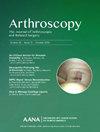商业行业中的人工智能:跨数字生态系统的端到端患者体验服务。
IF 4.4
1区 医学
Q1 ORTHOPEDICS
Arthroscopy-The Journal of Arthroscopic and Related Surgery
Pub Date : 2025-05-01
DOI:10.1016/j.arthro.2025.01.064
引用次数: 0
摘要
本文的目的是从骨科行业的角度,就人工智能提供的具体机会来评估人工智能的应用。很明显,人工智能有可能影响整个肌肉骨骼和骨科护理的连续性。通过将人工智能集成到外科应用中,以下领域可能会得到改进:外科受训者可以在扩展现实模拟中以更低的成本更轻松地学习;医生可以在决策和病例规划方面得到支持;可以通过改进病例管理和医院事件来提高效率;外科手术——直到最近还是行业唯一参与的领域——可以从术中人工智能输入中受益;最后,术后护理可以根据病人的具体情况量身定制。人工智能为行业提供了潜力,可以为患者体验提供有价值的增强,并在数字化护理过程中增强手术洞察力。然而,真正的价值不仅在于考虑如何将人工智能应用于每个孤岛,还在于考虑如何将其应用于患者的整个护理过程。机器人技术的出现首次开启了这一机遇。从机器人系统中获得的数据为此次行动增加了类似黑匣子飞行记录仪的功能,现在为工业界提供了两个关键的结果。首先,我们现在可以将术前的数据,如人口统计学,形态表型和病理学,与术中数据相结合,以制定手术计划和实时的解剖学数据,如韧带张力。其次,术后因素,如恢复方案和结果,可以通过术中经验的角度来考虑。在形成这一桥梁的过程中,人工智能可以加速真正集成的数字生态系统的发展,促进从提供植入物到提供患者体验途径的转变。本文章由计算机程序翻译,如有差异,请以英文原文为准。
Artificial Intelligence in Commercial Industry: Serving the End-to-End Patient Experience Across the Digital Ecosystem
Abstract
The purpose of this article is to evaluate the application of artificial intelligence (AI) from the perspective of the orthopaedic industry with respect to the specific opportunities offered by AI. It is clear that AI has the potential to impact the entire continuum of musculoskeletal and orthopaedic care. The following areas may experience improvements from integrating AI into surgical applications: surgical trainees can learn more easily at lower costs in extended reality simulations; physicians can receive support in decision-making and case planning; efficiencies can be driven with improved case management and hospital episodes; performing surgery, which until recently was the only element industry engaged with, can benefit from intraoperative AI-derived inputs; and postoperative care can be tailored to the individual patient and their circumstances. AI delivers the potential for industry to offer valuable augments to patient experience and enhanced surgical insights along the digital episode of care. However, the true value is in considering not just how AI can be applied in each silo but also across the patient’s entire continuum of care. This opportunity was first opened with the advent of robotics. The data derived from the robotic systems have added something akin to a black box flight recorder to the operation, which now offers 2 critical outcomes for industry. First, together we can now start to stitch preoperative elements like demographics, morphological phenotyping, and pathology that can be integrated with intraoperative elements to produce surgical plans and on-the-fly anatomic data like ligament tension. Second, postoperative elements such as recovery protocols and outcomes can be considered through the lens of the intraoperative experience. In forming this bridge, AI can accelerate the development of a truly integrated digital ecosystem, facilitating a shift from providing implants to providing patient experience pathways.
Level of Evidence
Level V, expert opinion.
求助全文
通过发布文献求助,成功后即可免费获取论文全文。
去求助
来源期刊
CiteScore
9.30
自引率
17.00%
发文量
555
审稿时长
58 days
期刊介绍:
Nowhere is minimally invasive surgery explained better than in Arthroscopy, the leading peer-reviewed journal in the field. Every issue enables you to put into perspective the usefulness of the various emerging arthroscopic techniques. The advantages and disadvantages of these methods -- along with their applications in various situations -- are discussed in relation to their efficiency, efficacy and cost benefit. As a special incentive, paid subscribers also receive access to the journal expanded website.

 求助内容:
求助内容: 应助结果提醒方式:
应助结果提醒方式:


